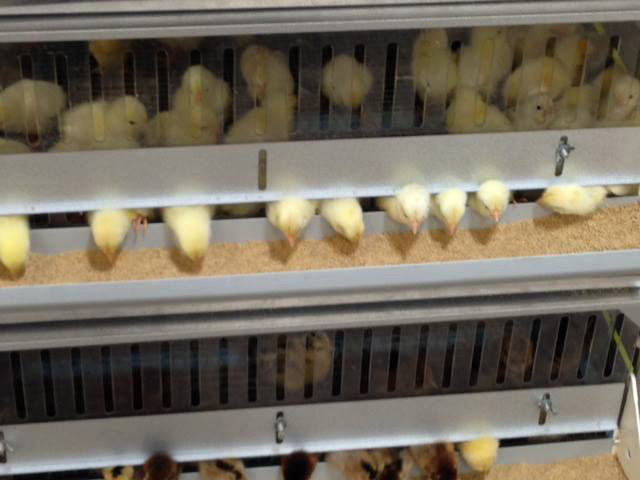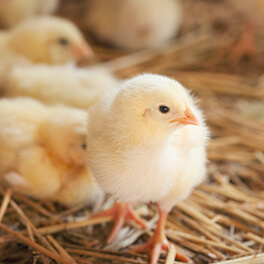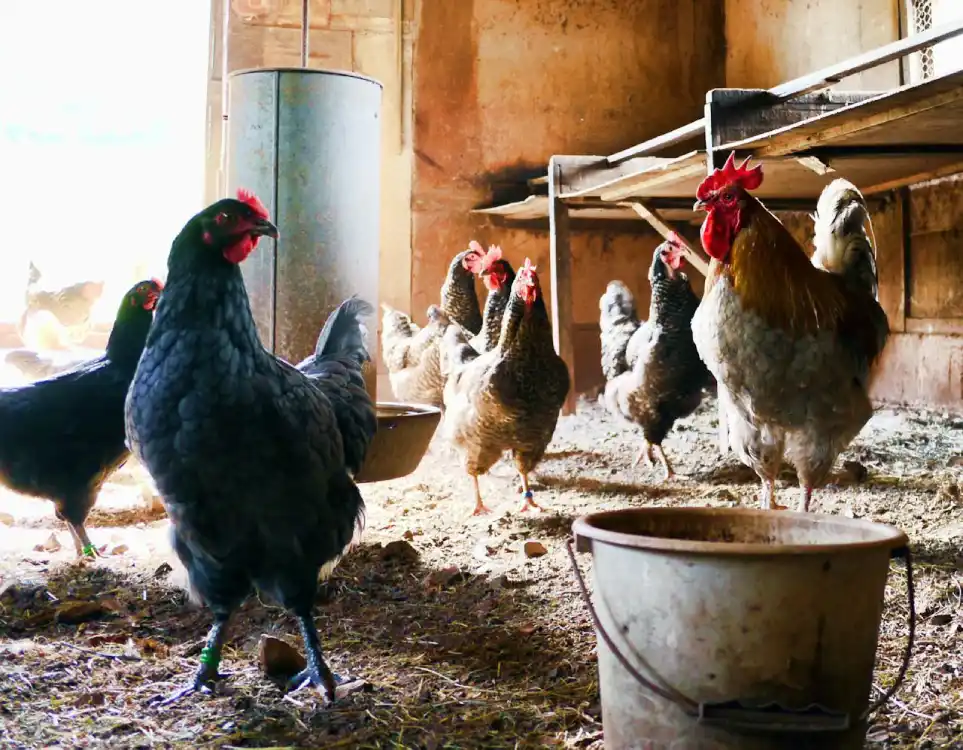How to Raise and Work with Backyard Chickens

So you’ve decided to raise baby chicks and chickens — congratulations! Raising backyard chickens is a rewarding hobby that provides you with lots of benefits such as high-quality eggs, pest control, and soil maintenance. We’re here to help you give your hatchlings the best environment possible so they grow up to be happy, healthy adult chickens. Read on for details on how to raise your new feathered friends.
Environment
The ideal environment for brand new chicks is a draft-proof area indoors for extra safety and protection. Keep in mind that chickens love to scratch, which creates a fine dust that can get everywhere! After 4-5 weeks you can then transfer them to an outside coop.
The Brooder
The brooder will be the chick’s first home. They come in different sizes depending on the number of chicks you have. The guideline for space is at least 2.5 square feet per chick, but the more space you can give them, the better. Layer the bottom with clean litter such as pine shavings and make sure you change it every couple of days. Baby chicks are prone to disease so cleanliness is very important. Once the chicks are a month old, add a low roost (about 4 inches) off the floor to encourage the chicks to start roosting. For those just getting started, a roost is the area in which your chicks will settle within the brooder.
Temperature
The temperature of the brooder must be 90-95 degrees for the first week, then reduced by 5 degrees each week thereafter, until the chick’s feathers grow in (5-8 weeks). You can use a heat lamp, or light bulb with a reflector and a 100-watt bulb. A thermometer is a good idea, but also pay attention to how the chicks behave. If they’re panting or huddling in a corner away from the light, it’s too hot. Likewise, if they’re huddling in a ball directly under the light, it’s too cold. Adjust the distance and/or wattage of the light until it’s comfortable for the chickens, and have areas in the brooder that are cool so they can cool down if needed.
Food and Water
You will need a feeder that keeps the food in place since chicks like to scratch at their food. Fill the feeder with crumbles (chick food) and clean it out often. Medicated or non-medicated crumbles are available, depending on how much time you can devote to keeping the feeder clean. If you get non-medicated, you’ll have to be very careful to clean the feeder often to prevent disease. And don’t worry about over-feeding, chicks only eat as much as they need.
As with any other animal, make sure fresh water is available at all times for your baby chickens. Place it as far away from the heat lamp as possible and if using a bowl, fill it with marbles or pebbles to prevent them from falling in and getting soaked, or drowning.

Play Time
After the first week or two in the brooder, it’s time to let these curious creatures come out and play! This is only a good idea if the weather is warm and predators (including the family cat or dog) are kept away. Chicks are fast and can get into a lot of trouble on their own, so never leave them unattended. You may find that some like to follow you around! This is natural if they have bonded to you, after all, the first large thing a chick sees is “mama” — it’s a part of the natural instinct of imprinting.
Chicken Coop
Once your chicks are 4-5 weeks old, it’s time to transfer them to an outdoor chicken coop. Your chicks may be uncomfortable with the new environment, but don’t fear. Once they learn that their new home is safe and comfortable, they should be back to normal in no time. It may be a good idea to confine them to their coop for three or four full days before letting them out to forage. That way, they’ll learn where their new home is and will always return there after foraging.
There are many shapes and sizes of chicken coops available. Choose one that you can fit in the backyard in an area that’s safe for your chickens.
Here are a few things to keep in mind when setting up a chicken coop:
- At this stage, chickens should have at least 4 square feet of space per bird, if they roam freely. If the chickens are confined, they will need at least 10 square feet.
- The feeder and water should hang 6-8 inches off the ground.
- A droppings tray is a good idea to capture and easily dispose of waste.
- The coop should be predator-proof and rodent proof (rats are attracted to chicken feed and droppings).
- The coop should be easy to clean so bugs and bacteria don’t congregate.
- The space should be open enough so the chickens can get a breeze (prevents respiratory diseases), but not drafty during the winter.
- Don’t forget the roosting poles!
- Pine shavings are best for the coop floor.
Dust Baths
One thing you’ll learn about your new backyard chickens is they love to take dust baths. They dig a shallow hole, loosen up the dirt, and then get as dirty as they can! Dust baths serve a very important purpose: they prevent parasites such as mites and lice from making a home in the chickens’ feathers. So don’t be surprised to see your chickens digging holes, just like the family dog!
Egg Laying
Chickens start laying eggs around 6 months of age, on average, and continue to do so into their teens. Size and color depend on the breed of chicken like a Sapphire Gem. Nutritionally, the size of the egg is the same. You don’t have to wash the eggs to be able to eat them. Some people notice the difference in taste between home-grown eggs and store bought, this is due to the diet of the chicken who laid them. Your backyard chickens more than likely get to roam freely and feed on grass and bugs, while the confined commercial chicken gets only commercial feed. Not only do farm-grown eggs taste better, they’re typically lower in cholesterol as well. So you’ll get to enjoy your chickens’ delicious, fresh eggs and also be in better health for years to come!

Get Started!
You are all set to get started raising and working with backyard chickens! Though it takes some time and attention, especially in the beginning, having these wonderful birds in your backyard is fun and rewarding.
Shoppers Supply is your source for all your poultry needs. We frequently stock baby chicks at both of our locations and offer a large selection of brooders, coops, and all the additional supplies you need to get started. Stop by our store in Apache Junction or Chandler and a friendly and knowledgeable member of our staff will be happy to answer your questions and help you choose the items you need.